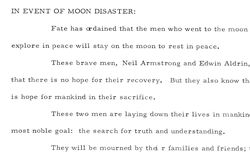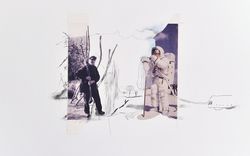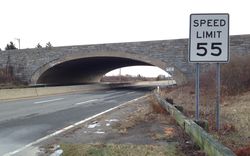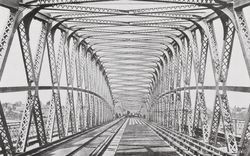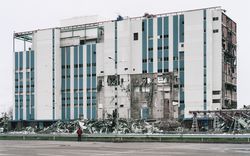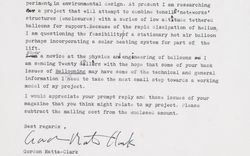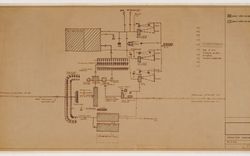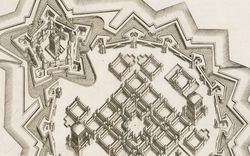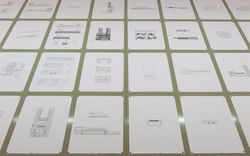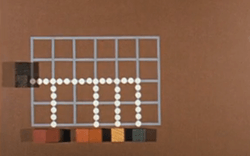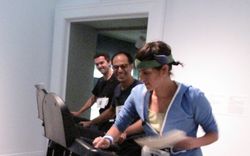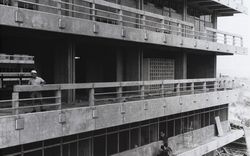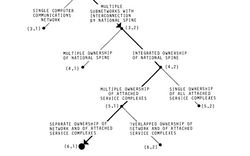Charles-François Viel’s Critique of Innovation
Text by Paul Holmquist
Charles-François Viel. The Panthéon, plan for the restoration of the Piers of the Dome, showing Charles-François Viel’s proposed reinforcement of Jacques-Germain Soufflot’s original piers according to traditional proportions, plate 24 in Principes de l’ordonnance et de la construction des batimens, 1797–1814. W8155 v.5
Principes de l’ordonnance et de la construction des bâtimens (1797–1814), by French architect and theorist Charles-François Viel (1745–1819), is a treatise on architectural theory and practice that articulates the value of the Vitruvian architectural tradition as comprehensive, self-sufficient knowledge, by which Viel believed architecture could authoritatively situate and express public life after the transformations of the French Revolution. A series of texts published individually in Paris between 1797 and 1814, the Principes appeared at a time when traditional architectural theory and practice had been called into question by the application of modern technology, formal experimentation, and the rationalization of many aspects of building design and construction.
Read more
Viel developed his conception of architectural tradition in the Principes through a sustained and vehement critique of innovation in contemporary practice by the “revolutionary” generation of architects in France exemplified by Etienne-Louis Boullée (1728–1799) and Claude-Nicolas Ledoux (1736–1806), as well as their precursor Jacques-Germain Soufflot (1713–1780). Eventually coming to comprise five volumes, the treatise consists of polemical essays and other writings of various lengths and formats, reports to academic and professional societies, historical and necrological notices, responses to public commentators, and descriptions and engraved plates of Viel’s own work, largely as architect for the Hôpital Général of Paris. Although architectural practice was central to Viel’s theory, the Principes was intended primarily for students and potential clients, in particular the new civil administrators responsible for commissioning public buildings after the Revolution. Despite Viel’s prominence in professional and academic circles, the Principes is relatively little known apart from a few controversial essays, especially in comparison with the writings of his brother Jean-Louis Viel de Saint-Maux (born c. 1736), whose Lettres d’architecture des anciens et celle des modernes (1787) were long misattributed to him.
Viel’s treatise was never published as a whole, but rather left to individual collectors to assemble into its final form. The Principes at the CCA is a rare complete collection of the work. It belonged to Viel’s close friend and colleague, the architect Antoine-Laurent-Thomas Vaudoyer (1756–1846), and was bound into three volumes with other publications by Viel and several other architects, as well as manuscripts and correspondence from Viel. Although he has been marginalized in traditional scholarship as an architectural and political conservative, Viel’s critique of innovation is key to an understanding of the profound changes in architectural theory and practice that occurred at the turn of the nineteenth century. He articulated the incipient fragmentation of the discipline of architecture into the specialized concerns of aesthetics, functionalism, and applied technology that came to definitively shape the course of its development in modernity.
The Principes begins with the eponymous Principes de l’ordonnance et de la construction des bâtimens (1797), in which Viel maintained that architecture, in its tradition as a practice, comprised its own comprehensive, self-sufficient knowledge. This knowledge encompassed all aspects of architecture, from the technical knowledge of construction to the rules of convenance, or appropriateness of composition and expression for a building’s client and purpose. Following the “true” principles of architecture based in nature that were concretely embodied in the great monuments of antiquity and the Renaissance, this knowledge could be grasped only through experience and by example. Although implicit in the historical conventions of building, the architectural tradition nonetheless required taste and imagination to be interpreted anew. Viel believed that only through its tradition architecture could regain the beauty and significance of the canonical masterpieces, as well as the correspondence of social and natural order that they manifested and reinforced.
In the essay Décadence de l’architecture à la fin du XVIIIe siècle (1800) Viel set forth most vividly his critique of novateurs who would “strike new paths” against tradition. According to him, the “decadence” of architecture lay in the corruption of true taste precipitated by the rejection of the classical orders and canonical precedents, as well as the destruction of the integral unity and authority of architectural knowledge by subjecting it to the authority of external disciplines, notably mathematics as applied to problems of building construction. In a famous passage, Viel excoriated one “too famous” unnamed architect for his “vagabond and excessive imagination” and another for “the extent of his ruinous enterprises,” and blamed their “capricious” spirit for taking hold of contemporary architects and effecting a “veritable revolution” in the ordonnance of buildings. Handwritten notes in the CCA’s copy of the text suggest these architects might have been either Boullée, or Charles de Wailly (1729–1798) and Ledoux, respectively. Viel also criticized the application of the methods and values of utilitarian planning typified by Jean-Nicolas-Louis Durand, arguing that they substituted economy and efficiency—virtues of good practice—for the very ends of architecture, and would reduce architectural creation to a “veritable mechanism.” Viel reserved his most sustained criticism for the increasing application of mathematics to problems of building construction, which he considered to be in direct contradiction to the lessons of solidity and durability embodied in the canonical monuments, notably in his essay De l’impuissance des mathématiques pour assurer la solidité des bâtimens et recherches sur la construction des ponts (1805). The structural deficiency of Soufflot’s church of Sainte-Geneviève, adopted as the Panthéon in 1791, served as Viel’s paradigmatic case in point in De la solidité des bâtimens, puisée dans les proportions des ordres d’architecture (1806) and other texts throughout the Principes.
Viel believed that the integral unity of the traditional knowledge of architecture was represented by the three primary classical orders of architecture, which he wrote were invented by the Greeks and perfected by the Romans. These orders embodied the “universal grammar” of natural proportionality that governed the necessary interrelation of beauty and solidity required for proper convenance. As types nonetheless inseparable from their concrete manifestations in particular buildings, the orders governed the development of the building as a whole, from the composition of the plan and massing to its expressive character, according to its intended purpose. It was only by the architect’s intimate knowledge of the orders, and the tasteful and judicious interpretation and use of these orders, that public monuments could situate with justesse or appropriate precision, the fundamental institutions of public life in continuity with historical convention and in accord with nature. Viel therefore believed that distortions of traditional proportionality—due to the “corruption of taste,” the objectives of utilitarian planning, or the application of proportions derived from the abstractions of statics—were fatal to architecture as a comprehensive and authoritative practice.
In spite of his critique of innovation, Viel was optimistic that architecture would recover its own traditional knowledge through a renewed study of its great monuments, and so be able to respond to new building functions and programs by reinterpreting its history in accordance with a conception of nature that, if no longer transcendent, could still be a source of order, beauty, and wonder. This optimism can be seen best in Viel’s Project d’un monument consacré à l’histoire naturelle (1776), proposed for the Jardin du Roi and its celebrated cabinet of animal, botanical, and mineral specimens. Dedicated to the naturalist Buffon, the longtime intendant of the garden, the monument was characterized by Viel as a vast “temple” of “nature vivante et nature morte” for the public advancement of art and natural science. In accord with the theory of Viel de Saint-Maux, Viel’s brother and likely collaborator on the project, the vision of architecture as the poetic site of our understanding of the cosmos was presented in a spectacular section–elevation whose cut line conjoined a subterranean grotto leading to wild animal dens with the teaching amphitheatre in the wing housing the resident savants. By associating these archetypal sites of creation and representation, Viel reasserted the importance of tradition as the essential ground of knowledge and progress, and the role of architecture to culturally situate and express this relationship by virtue of the knowledge and authority of its own tradition.
Paul Holmquist was here in 2010 as a Collection Research Grant recipient.
